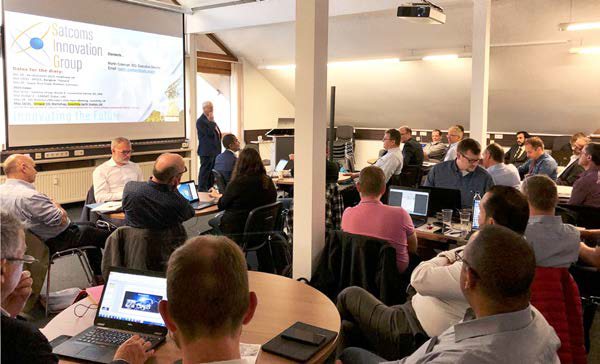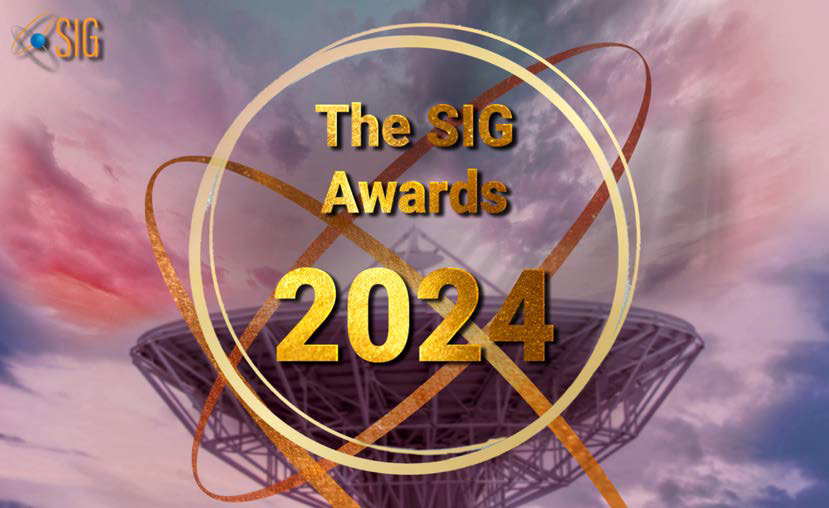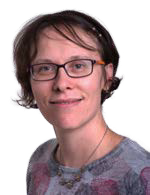If I had to name one thing that has really stood out over the last year, it would be that the need for industry-wide collaboration is probably greater now than ever before in the history of the satcom industry. As the space environment becomes more crowded, and indeed more complex, the issues and challenges that the industry now faces are of such breadth and complexity that no single organization or entity is capable of solving them on their own.

This year, LEO has continued to expand at a previously unimaginable rate, and the industry is continuing to move towards multi-orbit, multi-band networks because it provides a means of better meeting consumer needs.
All of these changes are driving innovation at ground level, and ground segments are becoming more dynamic, and complex, in order to support the new space environment. At the same time, the industry is also continuing to transition toward digitalizing and virtualizing the ground segment, and this will be vital if the ground is to keep up with an ever more powerful and flexible space segment.
Managing The Increased Risk Of Interference
Not only is spectrum management becoming more complicated as orbits become more crowded, but the changing ground and space environment is also creating many unknowns. It’s not clear whether all of these changes will result in more instances of interference, but it’s likely to increase the risk because with such dynamic networks, there are many more potential points of error.

We don’t know whether interference between adjacent satellites in different orbits may happen, and nor is it clear whether the tools and techniques that the industry currently uses to manage interference will continue to be effective with dynamic LEO and multi-orbit/multi-band networks and ground equipment that is constantly on the move.
The lack of standardization around new style antenna types is a further issue that needs to be addressed if we are to minimize interference and establish a ground segment that can effectively support these new dynamic networks. Additionally, regular testing of RF equipment to ensure that equipment is operating as it should be is going to become more important as we move forward. This is why having accurate, effective, and cost-effective testing is crucial.
Given all of these uncertainties, it’s hardly surprising that interference has been a key point of discussion at all of the events I’ve been at this year. I moderated a panel session in March in Washington DC on the tools, technology and the will, needed that is needed to combat RF interference which highlighted the urgency, but also the willingness among operators to work together to combat interference.
Satcoms Innovation Group (SIG) held a highly informative brunch panel session, hosted by Kratos, with SIG Directors discussing the most meaningful transformations in the satellite industry. As usual, we held a SIG workshop hosted by Intelsat, that focused on interference as well as on the latest developments and trends impacting SATCOM, such as the role of Artificial Intelligence (AI), virtualization and challenges around flat panel antennas.
We also discussed many of these issues at CABSAT in May, when SIG an entire day of panel discussions. Alongside interference and spectrum management, we discussed the inevitable roll out of 5G and 6G and the impact that these technologies will have on the industry. We also tackled the growing need for standardization, both in relation of the development of an open interoperable digital IF/ RF standard as well as around antenna design and approvals.
Understanding + Responding To Evolving Threats
The huge increase in space traffic that we are already seeing, and that will undoubtedly continue over the coming decade, is generating much discussion around space debris and the need for better space situational awareness (SSA) systems. Also on the docket were discussions centered on avoiding accidental collisions in space — the concensus was that satellite operators must protect their networks from deliberate acts of sabotage... and even destruction. We discussed these issues at Govsatcom in February when I moderated a panel on the many threats to space systems and capabilities, from passive threats such as interference, debris, and space situational awareness, to active threats such as cyber-attacks, jamming, and anti-satellite weapons (ASATs).
Along a similar theme, I also moderated a fascinating panel recently at Defence in Space, on the topic of SSA warfare. Military satellites must protect themselves from constantly evolving threats and, understandably, that could well involve avoiding detection in space, in which case, how can we still ensure SSA is effective? I think this is an area that we’ll likely see much more discussion regarding during the coming year.

Addressing The Skills Gap
One theme that has come up time and time again throughout the year is the skills gap that the industry is already facing and that is only going to widen as time goes on. There is a real need to find ways to encourage more young engineers into the SATCOM industry. We talked about this at length at the SIG workshop hosted at the Quadsat headquarters in Denmark, in June.
This particular issue is one that requires far more than just industry-wide collaboration as to engage the next generation and attract new talent, there is a need to work with schools, colleges and universities, other sectors, and even the wider satellite and space community.
SIG’s Role
It’s encouraging that there seems to be widespread recognition that we need to work together to solve the many challenges that the industry is currently facing, however putting this into practice will be the real test. The need for innovative thinking and collaborative work is greater now than ever before and SIG is perfectly positioned to stimulate debate around challenges and explore potential solutions.
The SIG technical workshops are incredibly valuable as they give operators, manufacturers and service providers the opportunity to get together to discuss the key issues affecting the SATCOM industry, to share knowledge and collectively advance the satellite industry.
SIG has grown from strength to strength since the organization was first established in 1997. SIG has a wide membership that is proactive and engaged in the issues at stake as well as a strong board of directors.

I was pleased to see Intelsat become a Director Member earlier this year with Angela Wheeler, long-time board member and active participant, named as Director. She joined existing Directors Andreas Voigt of Eutelsat and Paul Isaac from Kratos.
With much fanfare, we awarded the third annual SIG awards which celebrated the standout innovative technologies and solutions being delivered by individuals, companies, and institutions within the SIG membership. The categories were Cooperation of the Year, Innovation of the Year, and Young Engineer of the Year.
The winners were Digital Intermediate Frequency Interoperability (DIFI) Consortium, Atheras Analytics’ SGD Design Tool, and Ashram (Engineering Program Manager, Micro-Ant) respectively. The SIG Board also decided to name a special individual award to Valentin Eder of Space Analyses in recognition of his contributions in furthering SATCOM innovations.
As we come to the end of the year, I feel excited about the many developments and innovations that are underway across the satellite industry. Yes, there are a many challenges to address; however, I know that the will is there to work together to resolve these issues, — I have every belief that we’ll manage and solve many of these challenges and the SATCOM industry will emerge at the end of the day far stronger and more resilient.
satig.space

Helen Weedon
Author Helen Weedon is Managing Director of the Satcoms Innovation Group (SIG) which is dedicated to promoting innovation within the satellite industry. Helen has been involved with SIG since 2011, previously supporting the group with marketing, PR, and admin activities. Helen has over 15 years’ experience within the satellite and broadcast industries. She is the founder of Radical Moves, a specialist PR and Marketing agency. Helen is fluent in French, German, and Welsh, with a basic knowledge of Dutch and Spanish. Helen regularly addresses the industry on the challenges faced by the satellite industry and the innovative approaches needed to resolve them.

